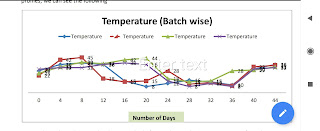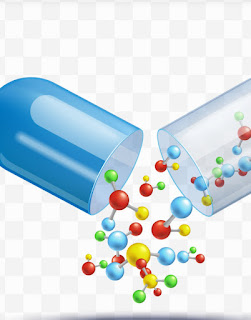Introduction:
Cleaning Validation is very important topic in Pharmaceutical Industries. Our cleaning procedure and cleaning validation should be inline with current regulatory requirements which gives confidence to regulatory auditor during the audit.
A cleaning process is validated and monitored through testing of the equipment. Testing ranges from visual inspection to swab sampling or rinse sampling. For any test method to be suitable for its intended purpose, it must be appropriate for measuring analytes at and below the acceptable residue limit (ARL)
Testing cleaning validation samples requires a validated method. The extent of validation is dependent upon the type of method employed, the capabilities of the method, the scientific and regulatory needs of the resulting data and the anticipated outcome of the testing. A number of test method options are reviewed for their analytical capabilities, along with their method validation parameters.
Validation parameters:
The analytical performance characteristics or validation parameters as defined by the USP include: Accuracy, Precision, Specificity, Detection limit, Quantitation limit, Linearity, range and Robustness. Validation elements differ for a method that covers a range or a limit.Validation of a limit test requires fewer resources, but the data results from testing prov byide less information. Addressing these performance characteristics provides assurance that a method meets proper standards of accuracy and reliability.
Methodology:
There are a wide variety of methods available to test cleaning validation samples. The method of choice is often the one with which we have familiarity. Methods such as pH and conductivity can provide cleaning data and require only instrument calibration. Many methods require validation
HPLC:
The use of HPLC for the testing of cleaning validation samples is well established and can address all validation parameters. HPLC is a chromatographic method that involves a sample in a liquid stream that passes through a packed column and separates from the other components of the sample. An HPLC method can separate the residue of interest from the components of the formulation as well as the detergent. A well designed HPLC recovery study can demonstrate accuracy, precision, linearity, range, LOD and LOQ in a single run.
Typically, HPLC methods for assay are designed to quantitate levels down to 0.1% of the active pharmaceutical ingredient (API), making sensitivity well below most calculated ARLs. However, the sensitivity of HPLC is dependent on the chemical structure of the residue of interest and the detector, which can quantitate the residue. A residue with no UV chromophore requires either a specialised detector (fluorescence, electrochemical) or derivatisation to achieve the desired sensitivity.
HPLC assay methods can be lengthy, 20-40 minutes per injection, which could be an issue for quick turnaround of samples.
Gas chromatography:
Gas chromatography has also been used to test cleaning validation samples8. This methodology is analogous to HPLC with comparable selectivity and sensitivity. The sample carrier is in a stream of gas which passes through a column for separation and a detector. Detectors are not limited to compounds with UV chromophores. The validation parameters and their demonstration are similar to HPLC. Gas chromatography is limited to residues that are volatile at the temperatures generated in the instrument.
Mass spectrometry:
A mass spectrometer (MS) is an instrument that measures the atomic mass of a sample. There are several types of MS instruments but the atmospheric ionisation models are widely used for cleaning validation.
An MS detector can be coupled with an HPLC or cleaning samples can be inserted directly. It separates the residue of interest through mass selectivity from the components of the formulation and the detergent. This method of analysis is sensitive down to the ppm or ppb level and a recovery study can demonstrate accuracy, precision, linearity, range, LOD and LOQ in a single run.
An MS detector can be coupled with an HPLC, or cleaning samples can be inserted directly
An accurate linear range can be limited, unless an internal standard is employed. An internal standard is a compound of similar chemical structure to the residue of interest, which will react in the same manner in the MS. Without the internal standard, accuracy can be restricted to concentrations at or near the ARL.
HPLC, GC and MS all require method development effort prior to validation. Method development can be fairly straightforward or extremely difficult, depending on the residue of interest and the sample matrix. Therefore, method development can range from a few days to several months.
Infrared:
Infrared (IR) testing of cleaning validation samples monitors absorbance of the residue in the infrared region of the spectrum. Studies have demonstrated sensitivity down to the ppm or ppb level as well as accuracy, precision, linearity, range, LOD and LOQ. This methodology is designed to take readings directly from the equipment surface, resulting in a very quick turnaround of clean equipment.
Selectivity can be an issue if different residues have similar IR absorbance and analogous to HPLC, not all residues demonstrate the necessary absorbance in the IR region.
Visible residue:
Visual inspection using a visible residue limit (VRL) can monitor equipment cleaning efficiency down to the ppm or ppb level. The VRL is the level below which the residue of interest is not visible to the equipment inspector. Results from validation activity can be used to establish the difference between the ARL and the VRL. Since this is a limit test, the detection limit is the primary validation parameter. Precision is also determined by using multiple observers in order to minimise subjectivity of the observers. This testing is also designed to make observations directly from the clean equipment for quick turnaround.
Conclusions:
The selection of testing methodology and validation parameters for cleaning validation depends on the specific combination of facility, equipment and formulations. There are a variety of viable methods to test cleaning validation samples. Validation of the testing methodology for cleaning validation samples can be accomplished efficiently. Proper validation of the cleaning validation sample test method helps assure that the cleaning program will be acceptable to regulatory scrutiny.

